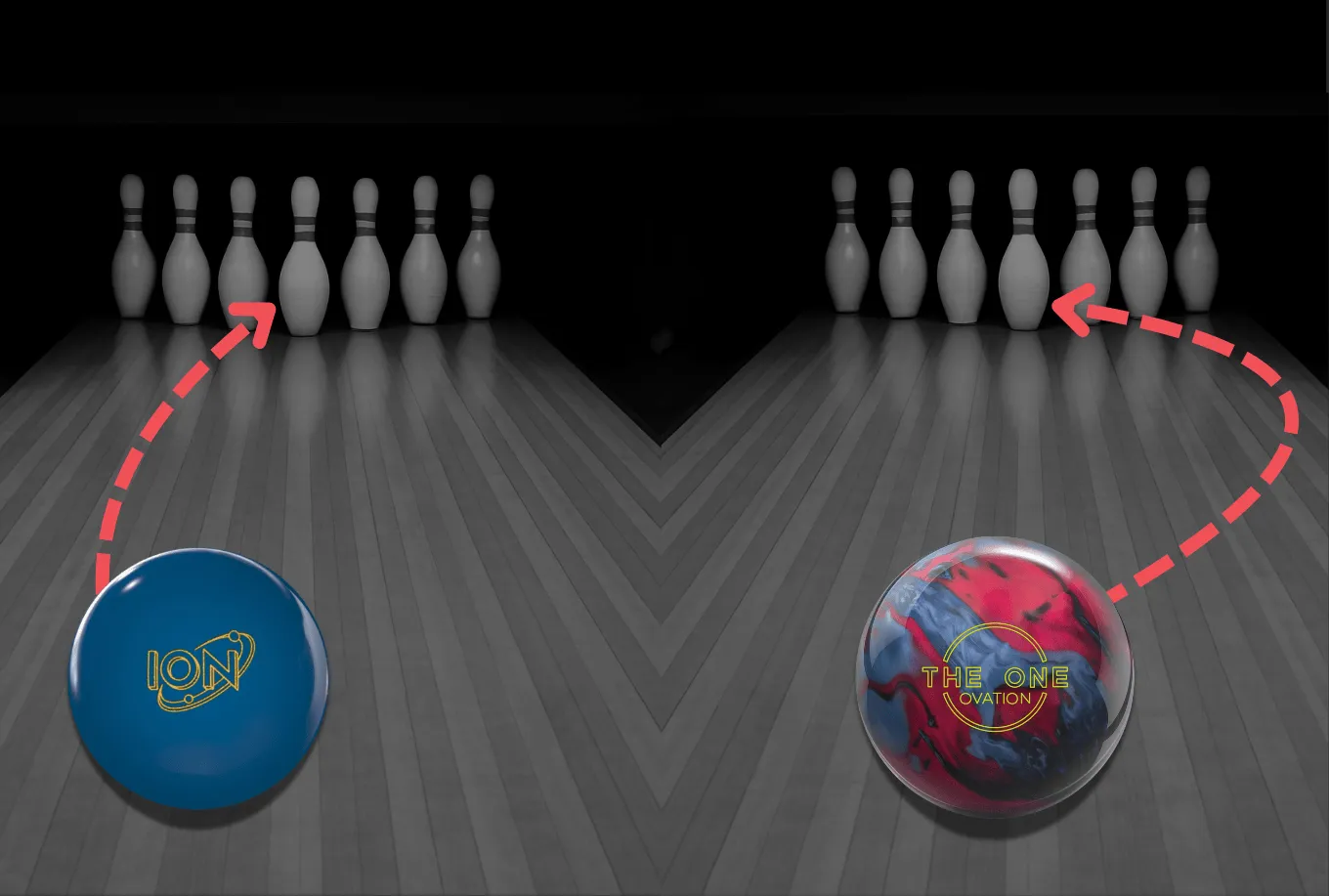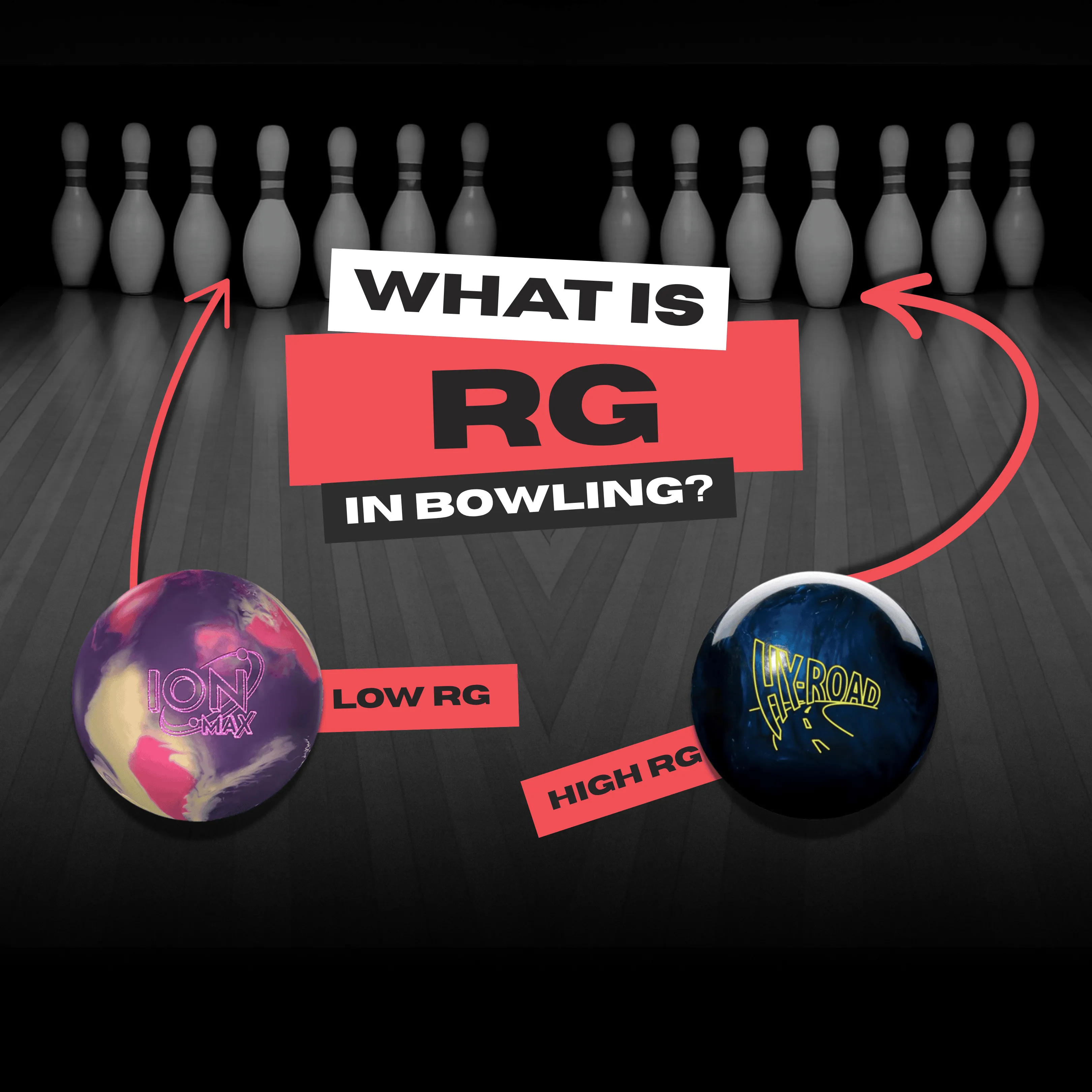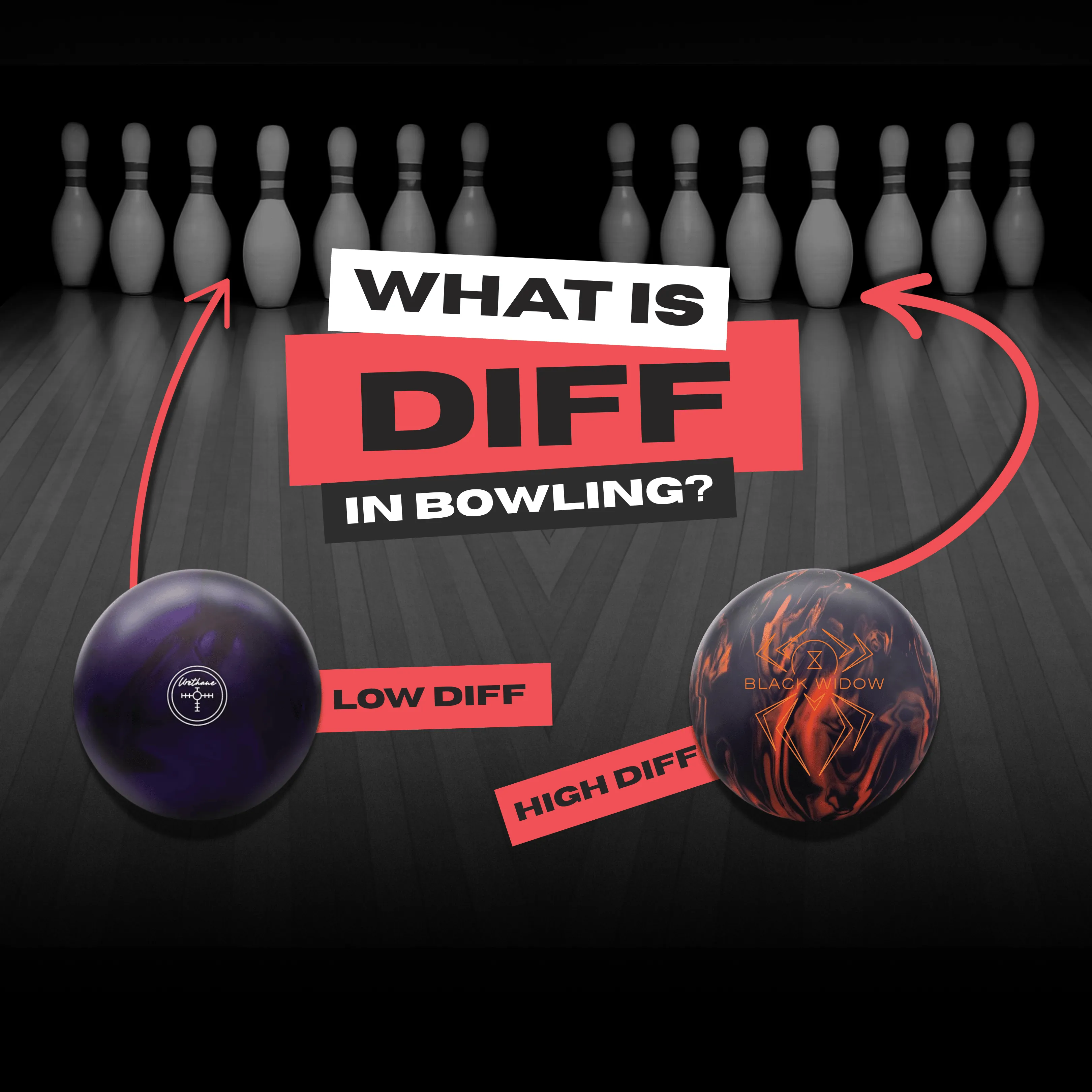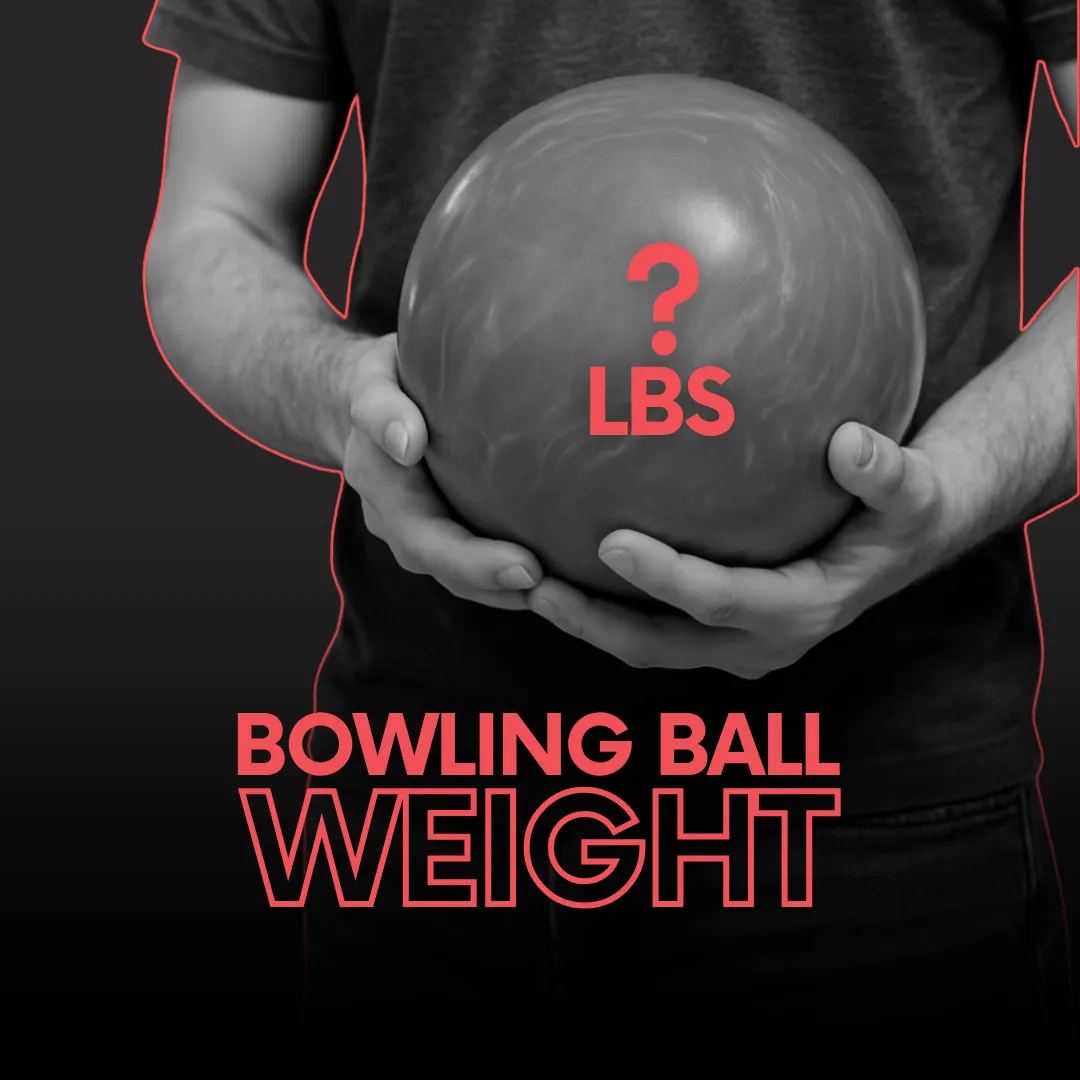Understanding core numbers can help every bowler make better choices. One of the most important numbers is intermediate differential.
Many bowlers know about radius of gyration (RG) and differential (diff), but intermediate differential often feels confusing.
Intermediate differential plays a big role in how an asymmetrical bowling ball changes direction. It also helps you understand which ball shape matches your style and speed.
This guide will explain intermediate differential in simple words and show how it affects your bowling ball motion on the lane.
What Is Intermediate Differential in Bowling?
Intermediate differential measures the difference between the high RG axis and the intermediate RG axis of a bowling ball.
This value exists only in asymmetrical bowling balls, since symmetrical balls have almost no core asymmetry.
A symmetrical bowling ball has two RG values: the minimum RG and the maximum RG.
An asymmetrical bowling ball has three RG values. The third value is the intermediate RG, which sits between the low and high RG axes. Because of this third value, an asymmetrical ball has an intermediate differential number.
Intermediate differential can also be explained as the difference between the ball’s high RG axis and its intermediate RG axis.
This value is also known as the mass bias strength. A higher intermediate differential means a stronger mass bias. A lower value means weaker mass bias.
Intermediate Differential Ranges in Bowling
Most intermediate differential values fall between 0.008 and 0.037 inches. If a ball’s intermediate differential sits above 0.008, the ball is considered asymmetrical. If a ball's intermediate differential sits below, then it is considered symmetrical.
The ranges are:
- Symmetrical balls: 0.000–0.007
- Low intermediate differential: 0.008–0.020
- High intermediate differential: 0.021–0.037
These numbers matter because they show how fast a ball responds to friction and how quickly it changes direction.
How Intermediate Differential Affects Bowling Ball Motion
Intermediate differential shapes your bowling ball’s motion from the mid-lane to the pins. It does not change how much the ball hooks overall. Instead, it changes the ball hooks.
Higher intermediate differential creates faster changes
A higher intermediate differential makes the ball react faster when it touches friction. The hook zone becomes shorter but stronger.
The ball changes from skid to hook in a very sharp way. This often creates a strong and sudden backend motion. The ball turns fast, uses energy quickly, and may hit the pins hard if matched correctly.
Lower intermediate differential creates smoother changes
A lower intermediate differential creates a longer and smoother hook zone. The ball changes direction more slowly. The backend motion becomes more gradual. This helps the ball keep more energy for the pins and improves control.
Both motions can strike well. The key is matching the intermediate differential to your style and lane conditions.
Intermediate Differential vs Differential
Many bowlers confuse differential and intermediate differential. They are not the same.
Differential measures the difference between the lowest RG axis and the highest RG axis. This number shows how much the ball can flare and how many boards it can cover.
Intermediate differential measures the difference between the intermediate RG and the high RG. This number shows how fast the ball responds to friction and how the hook shape develops.
A simple way to remember the difference:
- Differential = amount of hook
- Intermediate differential = shape of hook
Both work together, but intermediate differential gives the ball its unique motion shape.
Symmetrical vs Asymmetrical Bowling Balls
The type of core determines whether a ball has intermediate differential.
Symmetrical bowling balls
- Have no meaningful intermediate differential.
- Create smooth and predictable motion.
- Work well for rev-dominant bowlers and slower speeds.
- Offer fewer layout changes since they lack a strong preferred spin axis (PSA).
- Symmetrical balls usually are more stable and easier to control.
Asymmetrical bowling balls
- Have a real intermediate differential number
- Respond faster to friction
- Create sharper and more angular motion
- Work well for speed-dominant players
- Offer many layout options because the PSA is stronger
- The added intermediate differential gives more shape and more ways to adjust the core’s position during drilling
How Intermediate Differential Affects Spin Time and PSA Strength
Intermediate differential controls the strength of the PSA. A higher intermediate differential creates a stronger PSA. A stronger PSA means faster spin time. Faster spin time leads to a quicker hook.
Here is the simple chain:
Higher intermediate differential → stronger PSA → faster spin time → quicker hook
This is why high intermediate differential balls snap harder off the spot. They release energy quickly and make a fast move toward the pocket.
Lower intermediate differential balls spin slower and transition more gradually. This helps the ball keep energy.
Which Bowlers Benefit From Higher Intermediate Differential?
A higher intermediate differential gives faster motion. This helps the following players:
- Speed-dominant bowlers who struggle to get the ball to slow down
- Low-rev bowlers who need help creating motion
- Players who want strong backend shape
- Bowlers on patterns with a clear downlane friction spot
These bowlers need help forcing the ball to change direction. A higher intermediate differential makes the motion sharper.
Which Bowlers Benefit From Lower Intermediate Differential?
Lower intermediate differential gives a smoother and longer motion. This helps:
- Rev-dominant bowlers who already create strong hook
- Low-speed bowlers who do not want the ball to overreact
- Senior bowlers who prefer short-pin layouts or smoother shapes
- Bowlers on wet-dry patterns who want to control the breakpoint
- Players who need stable and predictable motion
Intermediate Differential and Oil Patterns
Intermediate differential plays a big role on different oil patterns.
When to use high intermediate differential
A high intermediate differential delivers a sharper transition at the breakpoint. It’s great for rev-dominant players or anyone trying to get more hook on heavy oil.
The higher diff gives the ball more flare and shape, creating that sharp, more angular motion through the backend.
When to use low intermediate differential
Choose a low intermediate differential bowling ball if you’re looking for a smoother, more predictable reaction.
It’s perfect when the lanes start to dry up, or when you don’t want the ball snapping too hard off the spot. It gives you that nice arc shape and better control through transition.
Intermediate Differential and Drilling Layouts
Asymmetrical bowling balls allow more layout options because the PSA plays a key role. Moving the PSA changes how the ball responds to friction.
A higher intermediate differential gives more layout freedom. You can place the core in strong or mild positions.
A lower intermediate differential creates fewer differences between layouts. The ball remains smoother and more stable.
Short-pin layouts reduce core flare. This makes the ball act closer to a symmetrical shape. Many senior bowlers use these layouts for added control.
Examples of Bowling Balls With Different Intermediate Differential Values
To understand these numbers better, here are clear examples of balls with high and low intermediate differential values.
High intermediate differential examples
These balls create sharp and fast backend motion.
Low intermediate differential examples
These balls create smooth and continuous motion.
No intermediate differential (symmetrical balls)
These balls offer stable and predictable motion on many conditions.
Please note that some links in this article are affiliate links, which
means we may earn a small commission that helps support our work, at no
extra cost to you.
FAQ
What is intermediate differential in bowling?
Intermediate differential in bowling is the difference between the ball’s high RG axis and its intermediate RG axis. It shows how much asymmetry the core has and how fast the ball responds to friction.
Do symmetric bowling balls have intermediate differential?
Symmetrical bowling balls have almost no intermediate differential. Their values sit between 0.000 and 0.007. This is not enough to create strong asymmetry.
What does higher intermediate differential do?
A higher intermediate differential creates a sharper and faster motion. The ball responds quickly to friction and changes direction fast.
What does lower intermediate differential do?
Lower intermediate differential gives a smoother and more controlled motion. The ball changes direction slowly and keeps more energy for the pins.
How does intermediate differential differ from differential?
Differential shows the total flare potential. Intermediate differential shows how fast the hook shape forms. One controls the amount of hook. The other controls the shape of hook.
Is intermediate differential important for beginners?
Beginners do not need to worry about intermediate differential. Coverstock and total differential are more important at early levels.
Which bowlers should use high intermediate differential?
High intermediate differential helps speed-dominant and low-rev players. It also helps bowlers who need strong recovery on the backend.
Which bowlers should use low intermediate differential?
Low intermediate differential helps rev-dominant and low-speed players. It gives predictable and continuous motion on many patterns.
How does intermediate differential affect drilling layouts?
Higher intermediate differential creates more layout options because the PSA is stronger. Lower intermediate differential reduces the impact of layout changes.
What intermediate differential value is considered high?
A value above 0.021 is considered high. Values between 0.008 and 0.020 are
low. Values below 0.007 belong to symmetrical balls.





